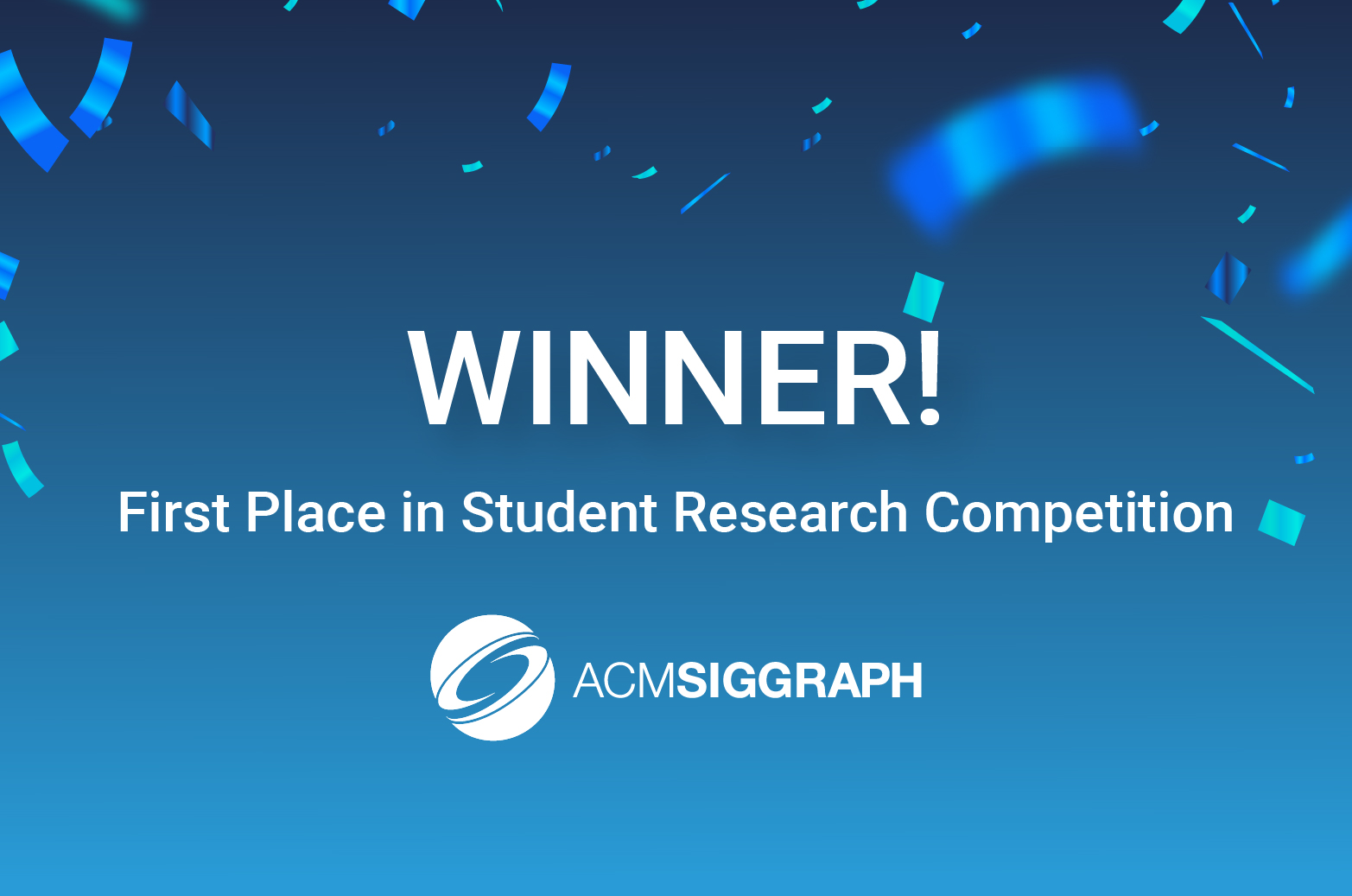Download our whitepaper
It will explain more about Computer-Generated Holography and why it represents the future of AR wearables.
We use Mailchimp as our marketing platform. By clicking below to subscribe, you acknowledge that your information will be transferred to Mailchimp for processing. Learn more about Mailchimp's privacy practices here.

VividQ Research on Reflective Materials for Holographic Display Wins at SIGGRAPH 2021

VividQ-Supported Method for Highly Realistic Representation of Reflective and Refractive Materials in Holographic Displays Wins First Place at SIGGRAPH 2021
VividQ continuously supports the best research in holographic display by hosting graduate students, led by the company’s co-founder and Chief Scientist Dr Andrzej Kaczorowski.
This week, VividQ Research Engineer and EngD Candidate Aaron Demolder presented his research on highly realistic holographic displays to SIGGRAPH where he won first place in the Graduate Division of the ACM SIGGRAPH Student Research Competition.
His academic poster 'Enabling Reflective and Refractive Depth Representation in Computer-Generated Holography' presents a new method for achieving realistic reflections and refractions in holographic displays. Aaron's work was presented during the 'Perception and Displays' session of SIGGRAPH - the premier conference for computer graphics and interactive techniques, alongside experts from Stanford University, University of Cambridge and Facebook Reality Labs.
This research, supported by the research team at VividQ, is crucial for virtual objects and scenes portraying materials from liquids to glass, to appear life-like, and shows how Computer-Generated Holography can achieve the highest level of realism in 3D displays.
Multi-depth rendering for holographic displays
Computer-Generated Holography (CGH) allows for the realistic reconstruction of three-dimensional objects and scenes through diffraction and interference of light. By “engineering” light, CGH displays can effectively reproduce the way we naturally observe our surroundings, at the resolution of the human eye. However, existing methods of image rendering for holographic display utilise a single depth value per pixel (with RGBZ data input). This is not sufficient for realistically representing scenes where materials and textures have reflective or refractive properties like mirrors, water surface, windows, or glass.


The VividQ-supported research shows that rendering multiple focal depths for these scenes is required. At SIGGRAPH, we proposed a new method of achieving highly realistic representation of reflective and refractive materials with existing 3D renderers, by introducing the concept of holographic compositing. The method allows renderers to provide more data in the hologram generation process, producing significantly more realistic holographic images that have reflective or refractive properties. This way holographic displays can produce projections of mirrors with realistic reflections, life-like fish tanks and infinity pools, or fully three-dimensional scenes shown through a window.
Future research will include applying this method for real-time holographic display powered by the VividQ SDK, with use cases in Augmented Reality, in-car Head-Up Displays and large-scale holographic displays.
The pioneering work in Computer-Generated Holography is a result of a collaboration between VividQ and the Centre for Digital Entertainment. The research was supported by academic supervisor, Dr Hammadi Nait-Charif and Valery Adzhiev from Bournemouth University and Dr Andrzej Kaczorowski, Co-founder and Chief Scientist at VividQ.
You can learn more about this new approach and implementation here.

.svg)






